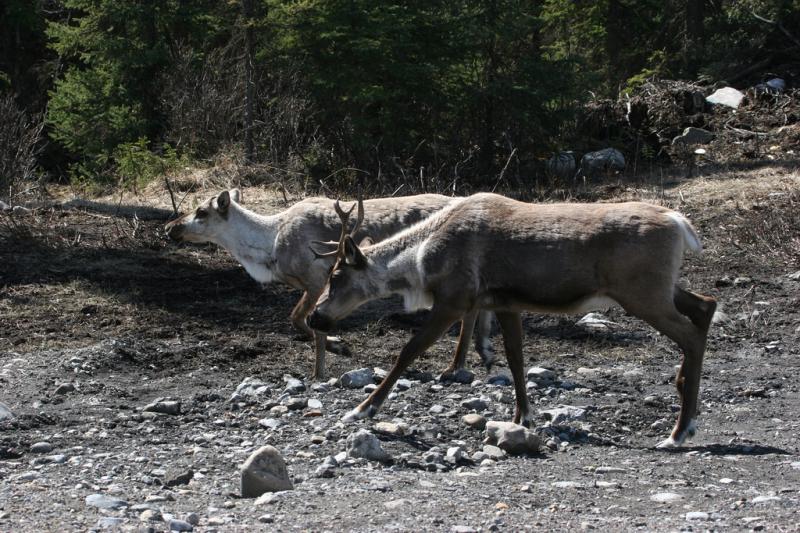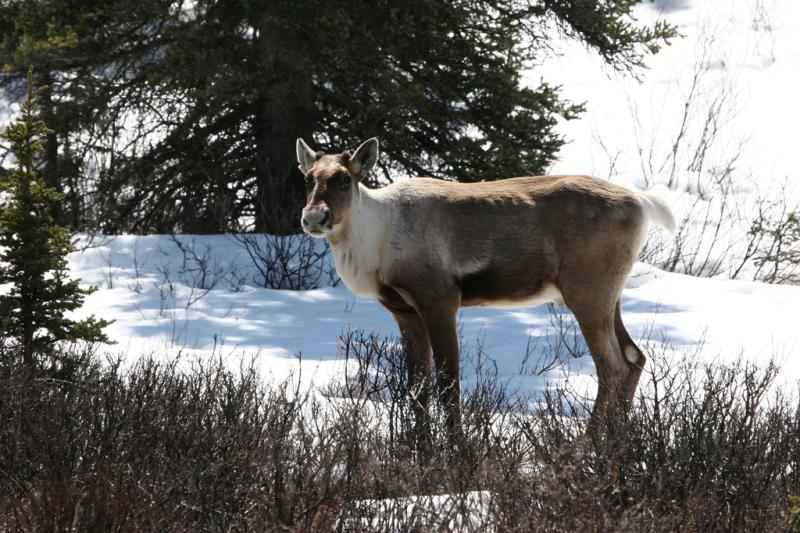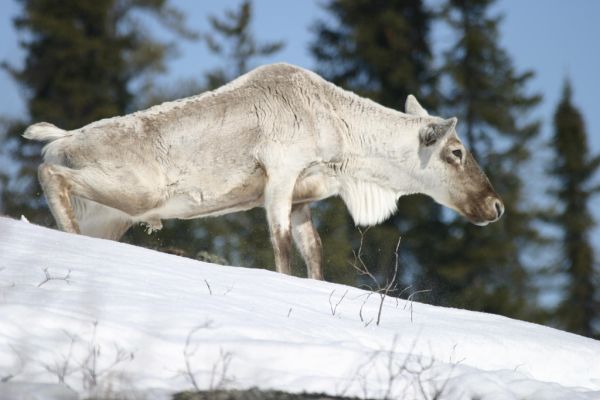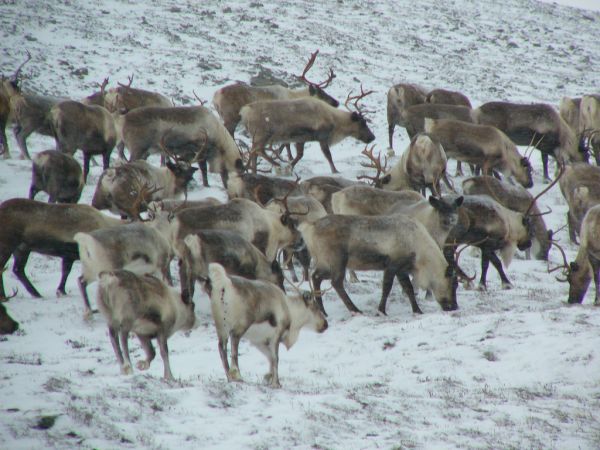Wildlife North America . com North American Animals - mamals, birds, reptiles, insects |
Caribou (Rangifer tarandus)
Photograph by Jean-Guy Dallaire. Some rights reserved. (view image details) 
Photograph by Jean-Guy Dallaire. Some rights reserved. (view image details) 
Caribou, Quebec Photograph by peupleloup. Some rights reserved. (view image details) 
Caribou herd near Nome, Alaska. Photograph by Ben Townsend. Some rights reserved. (view image details)
CARIBOU FACTS
DescriptionCaribou color varies from dark brown to nearly white. Woodland Caribou are darker brown while those from Greenland and the high Arctic are whiter. The belly, neck and area above the hooves is often white. The Caribou is the only species of deer in which both sexes have antlers. Mature bulls have large complex antlers. Females and young have smaller simpler antlers. Other Names Reindeer Size Males are larger than females. Length: Males 1.6-2.1m; females 1.4-1.9m. Weight: males 81-153 kg; females 63-94kg. Environment arctic tundra and subarctic forest Food leaves, roots, tubers, fungi, grass, sedges and other plants. Lichens are also eaten, especially in winter Breeding A single calf, weighing 3 to 12 kg, is born after gestation period of about 228 days. Twins are rare. Calves can feed on plants shortly after birth and are fully weaned after 45 days. Range found throughout northern polar regions of the world. Classification
Home | Mammals | Reptiles | Birds | Insects | Privacy Policy | Disclaimer | Contact Us |